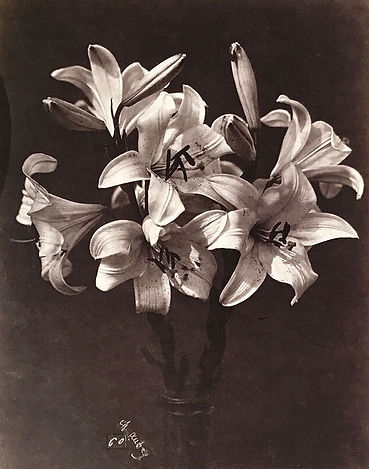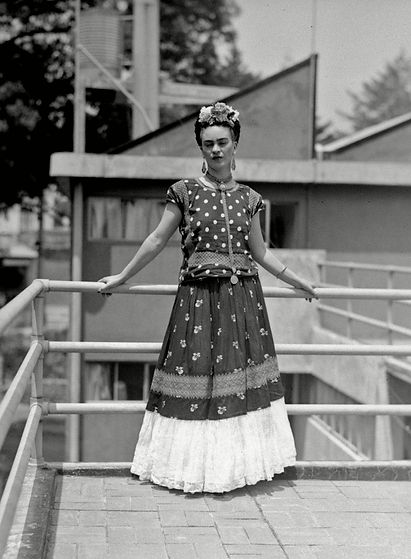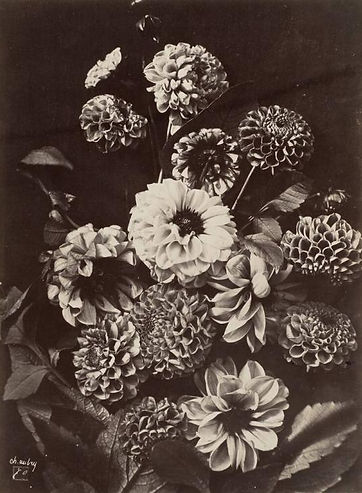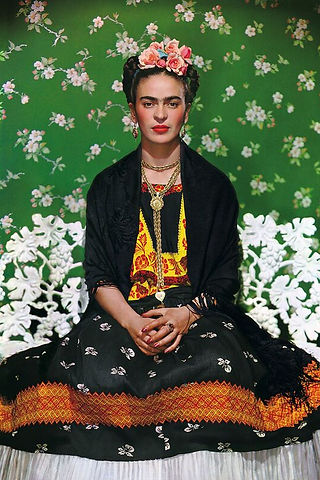
Page Title
How does culture and background influence the way artist depict life and death in their art?





The definition of Culture and Background is ‘The context of one’s life experience as shaped by membership in groups based on ethnicity, race, socioeconomic status, gender, exceptionalities, language, religion, sexual orientation and geographical area’ In this essay I plan to explore and highlight the several ways in which culture and background plays a significant role in artists work, when exploring the theme of life and death learning how this theme has evolved over time and given us a greater understanding on how separate places around the world all have their own perspective on the mater. For the purpose of this essay, I will consider the timeless works of the French photographer Charles Aubry and mixed media artist Frida Kahlo bringing her vibrant Mexican culture into her works. I am interested in how best to represent death in my work, and hope by the end I can come to a decision on the strongest way to display death.
Charles Aubry is a French photographer who was fascinated by flowers. He spent much of his life designing floral patterns for fabric, carpet, and wallpaper. Which during the time was extremely floral, with big extravagant flowers being the focus. Following the events of the French Revolution, Aubry felt the need to create an archive for the future in which he started what is now know to be one of the earliest and greatest projects in photography.
Aubry was fascinated by flora, He wanted to encapsulate the raw beauty of flowers forever and he did so using his technique of plaster casting, a technique in which the flowers are dipped in wet plaster and left to dry, eventually leaving the flower still in detail. In the piece ‘Lilies in Glass Vase’ we are immediately drawn to the lilies, being the lightest part of the photo and the centre of attention, perfectly still allowing the lighting to give it the depth and realistic look to it. Like many of Aubry’s pieces, the photograph is taken in black and white, with a brownish tinge due to the equipment at the time. This was done to further give his photographs the timeless feel to it, as if it were truly frozen. To talk about the composition of the piece, the flowers, representing the beauty and the most important part, is in the centre, little attention is paid towards its roots and the glass that holds the severed flowers upright. This connotes to the viewer that death was not something they embraced nor considered, more so to preserve the life, however in doing so they ’killed’ the flower to keep it in ’eternal life.’ To link back the use of plaster was completely unseen before this, many speculate that this was Aubry’s way of combining a fabricated material to create eternal life, as after the revolution France was in a state of rapid growth and the desire to stay and see where it all goes was widely shared amongst the county. Furthermore, keeping the flowers in plaster prevents the outside to see any decay, again this links with how at the time, showing weakness in decay and death was not an option, again supressing the idea of death and focusing entirely on flourishing. For the people who saw the piece, this created not only a beautiful photograph, but a message of being strong and forever blooming, like the flowers.
In the piece ‘Still life with peonies’ Charles Aubry features an arrangement on various flowers with the main ones being the Peonies in the middle and around the edge. This piece in particular is interesting as it features both still life and plaster in the sense not all flowers have been indefinitely preserved where as some have. Again, in this piece the use of plaster Is made apparent when focusing on the foliage located towards the bottom of the image on top of the table. The lighter flowers are the ones that stand out as not only benefiting from the lighting to again give the depth that was unseen in a photograph for its time, while also incorporating prominent levels of detail such as small veins through leaves. Furthermore, in this piece the hard contrast from light and dark is an immensely powerful image as it provides further focus and attention towards the lighter spots of the composition and again shifts all the focus to the main focus. What really separates this piece of work from the rest is that this photograph was then taken a next step in a process called Albumen Printing. This is a special type of print allowing the image to be created using silver nitrate to transfer on to more permanent mediums such as glass, which is what Aubry had done to this work. This again supports the ideals of preservation and eternal beauty, an ideal promoted by Napoleon, the then current leader of France, being an ex-solider his views on defeat and weakness were to be hidden and concealed. Additionally, this plays on the economic and social issues that linked with France at the time. Like many places the wealthy thrived and enjoyed long lives whereas the poor had short rough lives. This print was made for the wealthy, as the use of silver and certain materials were not available to all people, showing the reader that wealth and beauty were the main ideals and they controlled everything, even death.
My next artist, Frida Kahlo is a Mexican artist; she was most famously known for her unique self-portraits in oil paints, such as ‘The wounded deer,’ ‘January 27th’. Coming from Mexico where death is celebrated vastly different from the rest of the world, she incorporates her culture and views in her art work. Having experienced a near death accident at the early age of eighteen, Kahlo wears her experiences and culture with pride and incorporates it all within her unique art work, often conveying messages and teachings through her work.
Her art work is self-portraits of herself, with flowers or foliage in the background of her leaving her foregrounded often with an animal or some sort of wildlife. In some cases, she decorates herself in traditional ways such as crowns made up of different exotic flowers, or in some cases where she would make a whole-body portrait, where she dresses herself in traditional clothes or attire. This shows how she is in touch and actively practicing her culture and incorporate it into her works, such as; ’The two Fridas’ and ’Itzcuintli Dog with me.’ She also accompanied most of her art work with quotes she lived by. One being ‘I paint flowers so they will not die’ This can be clearly seen in her ‘Green’ painting, featured on magazine Vogue in 2018, which is an iconic painting displaying herself sat in traditional robe and clothes, again wearing a flower crown, further accompanied with white flowers decorating the vibrant green background. In this piece Frida has surrounded herself in flora and nature, in a sense of embracing it and becoming almost one with it as she also decorates herself with the same flower she is engulfed around. This gave the work a big contrast from her to the surroundings in a sense highlighting herself due to the clash of black and white. Despite being over half a century after her passing, this was a powerful message at the time as she embraces her beliefs and culture before and after death, in the sense that she has nature. Her belief was that we all came from nature and once we pass, we will return to nature. The piece also clearly states she is one with her culture as she has painted and wears two native Mexican flowers being fuchsia and zinnia. This alone shows her in-depth connection and influence to culture and background. In depth the meaning and symbolism of these flowers plays a key role as one helps feelings of misdirection and celebrates the journey start to end, while the other represents maturity, growing and understanding, which is also an outlook to death shared in Mexican culture. ’Zinnia- remembrance and tribute, Fuchsia- eternal love and honour’
Looking at some of her work to see how culture and background are integrated, we see in this piece that it is a whole-body portrait of Khalo while also surrounded by factories and pollution. The composition of the piece features Frida in the middle of the piece with all the pollution and industrialisation around her, this allows the viewer to empathise with her and understand that it happens all around her, furthermore she allows the reader to see beneath the ground where she shows how the technology is mimicking something as vital as the plants and roots there before. Juxtaposing both beside each other conveying the message that they do not need this. The use of oil paints naturally has a long-lasting time, further reinforces a recurring idea of preserving herself, better yet her ideas and views, from death. Being very politically involved, she also wanted to voice her ideas in ways it would be seen by all, again keeping her ideas and messages eternally alive through these paintings, especially during a time of post colonialism where it may have felt that culture and identity were fading and being questioned Frida managed using her Panting’s and influence to keep it alive. In some of her more political pieces she still dresses herself in traditional cultural clothes, while convey her messages, such as colonialization from America brought death, and how that is supposed to be ‘normal’, in the piece she contrasts the use of machinery to plants, showing how now the live things which have roots is parallel to the machinery that also has wires in the form of fake roots, conveying her messages of confusion in protest against all the harm was being done to her culture and environment. The painting also features a metallic skull in the middle, this is the link to death and how industrialisation will not have just benefits, more so the destruction of their wildlife, which in their culture is said to be what humans are. It is clear to infer that Khalo came from a traditional background and that it influences her works as such she protests the ‘progress’ of the country, as she depicts the machinery in place of nature as if it were alike which she does not agree with.
There is a great number of similarities and differences between both artists, from their views on death to their mediums used in their art work. We will look at how despite them being from separate times they share similarities and differences that you would not expect.
Despite being century’s apart Khalo and Aubry share many similarities in their artwork, The most obvious similarity being the use of flora, both artists include nature within every piece made. Aubry had done this through influence due to styles and demand at the time. He also chose flora due to fascination of intricate details and beauty, a fascination also shared by Khalo who also admired nature for beauty and the messages due to culture and hidden meaning behind nature that she so passionately embraced. Another similarity shared by both artist is that both underwent extreme change in their lifetime. This affected their artwork individually, for Aubry he was part of the French revaluation, a pivotal point in France’s colourful history. Likewise, Khalo also underwent massive change to her country in the effects of the colonisation of Mexico, in the sense that heavy industrialisation and mass pollution had begun in Mexico. For both artist this affected their political and self-views which is then further expressed through their artwork, Frida Khalo making targeted clear messages towards industry and Aubry changing to meet social standards and fit into the class divides caused from the revolution.
To begin the physical differences between artists is Aubry operates using photography of flowers dipped in and then occasionally transferring the image to a new background. Whereas Frida Khalo used a more traditional medium of oil paint. Delving deeper than medium the actual subject matter was often different. Despite both using flora Khalo’s work often featured a self-portrait or depiction of someone whereas Aubry strictly did pure flora. Another difference is their views on death, more so their attitudes towards it. Frida in her art work and beliefs embraces death, this is shown as she has explicit paintings of animals being shot to skeletons in place of humans, indicating they are one in the same. She links it with nature, like her culture's views, going back to the use of Fuchsia and Zinnia, two flowers' Mexicans pride themselves with regarding the topic of death. Whereas Aubry’s entire portfolio is based on preserving life and stopping death in the form of decay. This is the biggest difference regarding the topic of death between both artists. Acceptance and celebration against preservation.
In conclusion culture and background play an astronomical factor in artist's work. I feel as if their work is a perfect embodiment and product of their environment. Of Course, the artist themselves play a key factor in their own work however it is clear to make connections and similarities to their culture and background and their art work. Furthermore, I feel that it is inevitable to not include your background and experience into your own art work. Stemming further from these two artists it is apparent in every artwork, and therefore answers my question and proving what a key cornerstone to art work culture and background plays. In terms of my own work moving forward I will take elements from Frida Kahlo, in particular the celebration and acceptance aspects of her views and displays towards death.



.jpeg)
